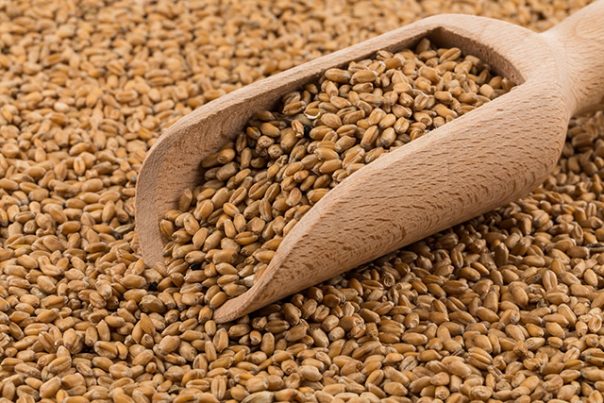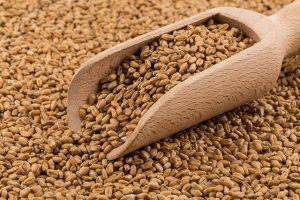
Spelt – sources, health benefits, nutrients, uses and constituents at NaturalPedia.com
Thursday, August 03, 2017 by Jhoanna Robinson
http://www.naturalpedia.com/spelt-sources-health-benefits-nutrients-uses-and-constituents-at-naturalpedia-com.html

Spelt is a type of grain that has its roots in the Middle East and grew popular in Europe as far back as 750 to 15 B.C. While spelt is still being cultivated in the modern era, it is still called an “ancient grain” because it imbibed no changes even in the last several hundred years, while other kinds of grain have undergone dramatic transformations.
Over several millennia, spelt and other grains were replaced by wheat as the primary grain of choice by farmers, as wheat has a higher chance of producing higher yield and it has free-threshing kernels, that is, grains disentangle themselves from the chaff easily during harvest time. A debate has been going on among grain lovers on which is the better grain – wheat or spelt. People who are partial to spelt bread and pasta say spelt is better-tasting than wheat, as spelt tends to be nuttier and more filling than wheat.
It turns out that spelt is healthier than wheat as it has a slightly better nutritional profile than wheat. According to a 2012 study, “Spelt differs from wheat in that it has a higher protein content (15.6 percent for spelt, 14.9 percent for wheat), higher lipid content (2.5 percent and 2.1 percent, respectively), lower insoluble fiber content (9.3 percent and 11.2 percent, respectively), and lower total fiber content (10.9 percent and 14.9 percent, respectively).”
Spelt is also said to be more resistant to pests and disease as it has an extremely tough exterior hull.
List of known nutrients
- Betaine
- Copper
- Magnesium
- Manganese
- Phosphorus
- Protein
- Selenium
- Vitamin B1 (Thiamin)
- Vitamin B2 (Riboflavin)
- Vitamin B3 (Niacin)
- Vitamin B9 (Folic Acid)
- Vitamin E
- Zinc
Medicinal uses for spelt
Spelt promotes enzyme activity. It is a food choice of people who are trying to lose weight because it improves the metabolism. It also leaves people feeling full for longer hours at a time compared to white bread or cookies that are made from refined flour.
Spelt can contribute a lot to making your skin beautiful due to antioxidant properties contained in selenium. It can protect your skin from the harmful rays of the sun and prevent your skin from aging. Also, the vitamin E and zinc present in spelt can contribute to making your skin radiant. The fiber content in spelt makes it possible for it to remove harmful toxins form the body, thereby protecting your face form acne breakouts.
Spelt can also do wonders for your hair. Its zinc content provides for your hair’s shine and health, and keeps it protected from damage.
Spelt is good for your eyesight. The niacin, vitamin E, and zinc content of spelt reduces the risk of cataract and macular degeneration, and delays the onset of vision loss.
Spelt can protect pre-menopausal women from risks of incurring breast cancer. It also addresses chronic inflammation issues such as cognitive decline, osteoporosis, Alzheimer’s disease, among others.
The folic acid in spelt can induce the production of red blood cells, which is essential in preventing birth defects in babies.
Body systems supported by spelt
Spelt is good for your digestive system. Spelt is rich in fiber, which helps the process of digestion and absorption and regulates bowel movement, thus minimizing the incidents of sugar spikes. A study that observed 247,487 people showed that people who ate spelt on a regular basis are 14 percent less likely to have a stroke, become obese, or acquire heart disease and type-2 diabetes.
Ways to use spelt
Spelt can be cooked and eaten whole. It could either be a warm side dish or an addition to a cold salad. It could also be ground into flour for baking purposes.
Substitute your usual carb intake of potatoes or rice with spelt. Other meal ideas include spelt broth, risotto, or stew.
Here are some other recipes for you to try.
Where to learn more
- Spelt can Replace Wheat for Improved Health
- Put Down the Breakfast Cereal & Learn to Soak
- 1931 diet tips still working today
- How to use an elimination diet to heal
- Wanna Get Fit and Trim? Stop Dieting and Let your Body Take Over! (And Follow These 5 Guidelines)
Summary
Spelt can protect pre-menopausal women from risks of incurring breast cancer.
Spelt is good for your digestive system.
Spelt is good for your eyesight.
Sources include:
Tagged Under: Tags: spelt






